Nature (September 21st, 1996)
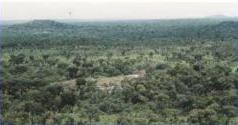
Savanna
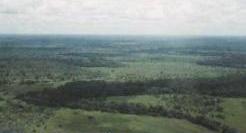
Trees along the river
|
|---|
|
|---|
The country has rain forests in the south, small desert areas in the north, and the rest is mostly savanna.
In Bangui, the capital city of the country, whose altitude is about 350 meters, it is hot and humid all the year round. Yaloké area, where we are doing the construction work is situated about 300 kilometers to the northwest of Bangui. Its altitude is 700-800 meters and it has a savanna climate.
This area has a typical inland climate. In the dry season, the difference in temperature between the daytime and the night is by 20 degrees, and in rainy season, often by 15 degrees.
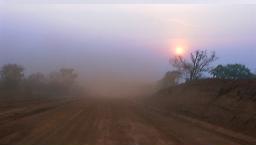
<Morning in the dry season>
Air is always stale by dust
|
|---|
During the summer in Japan, we are in the rainy season here, and during the winter, we are in the dry season.
In the early morning in December the temperature is the lowest here and it goes down to about 10 degrees C. During the daytime, however, the temperature goes up to far more than 30 degrees and it is often hard for us to adjust ourselves to the change in temperature.
In February and March, it suddenly becomes hot. The temperature in the daytime reaches about 40 degrees C., and there is almost no humidity. It is as if we were in a sauna. There is a lot of dust and the air is always stale.
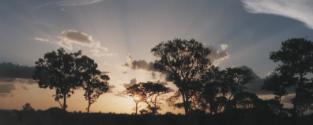
Sunset in the rainy season
|
|---|
In April, rain starts to fall and the rainy season continues until October. In July and August, it rains particularly often and the construction work doesn't progress well. But unlike the summer in Japan, it is not so humid in the daytime, and this is the best season to live in a year.
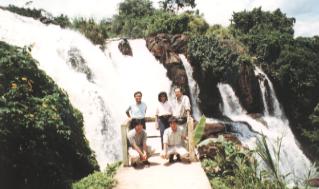
Boali Fall is about 80km from Bangui
|
|---|
The first image the Japanese have about Africa is a hot weather, but that is not correct. Compared with the summer in Japan, the summer here is far easier to live in. Both in the rainy season and the dry season, any clothes will do.
You can spend a whole day comfortably in short-sleeve underwear and long-sleeve work clothes, with thick blouses over them. Sometimes only a sleeveless undershirt will do. We need an air conditioner indoors but outdoors we don't feel too hot. Maybe this is the best place to live in if there are not the clouds of sand. One caution! Even if you don't perspire, you must be careful because a lot of water goes out of your skin without notice.
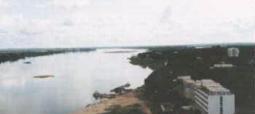
Ubangui River
|
|---|
Beside Bangui, there is the Oubangui River, a branch of the Congo River. An adjustment dam (this is a dam constructed up a river to store water during the dry season) was completed in Boali, 80 kilometers away from Bangui, in 1991. Due to the influence of the Mbali lake that was constructed then, a little rain falls in Bangui during the dry season, but in Yaloké area, almost no rain falls in the dry season.
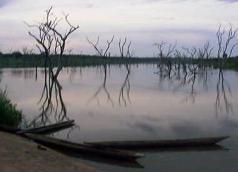
Lake Mbali
|
|---|
The typical flowers of this country may be flame tree and bougainvillea. In addition, there are some other flowers like acacias, but there are not so many kinds.The native people are not so much interested in flowers. When I ask some of them the name of a flower, their answer is often like "It is a flower".
The number of wild animals is decreasing. The government is protecting them, but it seems that a lot of people poach them.
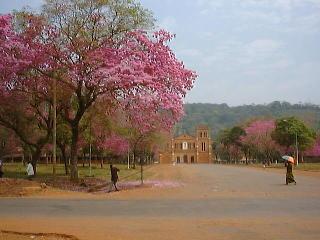
Notre Dame de Bangui
|
|---|
In this country, there are animals living in the rain forests and those living in the savannas, so it is rich in resources for tourism and there are some natural parks. They are not well developed, however, due to a difficult access.
Saint Florist National Park to the north of the country is well known, but it is 1.000 kilometers away from Bangui. Almost all the roads to the spot are not paved. People usually go there by plane, but planes sometimes have an accident on the way.











